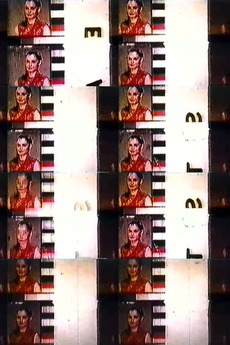“I’m thinking about writing a book,” I said, “a book that would be a sort of symptomatic journal of my disease that could serve as a source of information for doctors and literary types both. This idea came knocking at my door as twilight fell… I let it seduce me as though I were just another conquest… Even though I know that writing a book is the greatest shame than an original mind can bring upon itself.”
“But — I want to write a book, Raimundo. A book that will make my illness into an iridescent fantasy…”
Viscount Emilio Lascano Tegui, On Elegance While Sleeping
Sometimes you just can’t fight those creative urges. Here’s another, from Chandler Brossard’s first novel, Who Walk In Darkness. Brossard published Who Walk In Darkness in 1952 and based the character of Harry on his friend William Gaddis, then still an aspiring writer three years out from publishing The Recognitions to piddling acclaim.
“Harry, when do you expect to finish your book?”
“Are you writing a book, Harry?” I asked.
“I’m not only doing it, I’m living it. Which reminds me. What happened to that underground man you came in with?”
“He’s casing the joint,” Porter said. “He’ll be back.”
“What do you mean by the underground man?” Goodwin asked.
“The man who will do anything. He’s a spiritual desperado.”
“He means Max Glazer,” Porter said. “He’s a very smart guy. Really very hip.”
“I didn’t say he wasn’t. He is a desperado, though. Do you know what his ideal is? His ideal is to look like a street-corner hoodlum and be the finest lyric poet in America at the same time.”
“He sounds remarkable,” Goodwin said. “I would enjoy meeting him.”
“Don’t say it that way,” Julia said. “You’ll meet him.”
“Tell me some more about the underground man, Harry,” Goodwin said.
“I’m writing a book about him too.”
“It seems that you are writing these books with your mouth, Harry,” said Porter.
“It is a new literary form,” Harry said.
One of the big names in experimental film started printing or painting directly onto the film leader when he desperately felt the urge to create while he was without either camera or unused film stock. I want to say it was Brakhage’s Mothlight (or may something by Frampton?) but in searching for the quote I had in mind I found instead a very different story of the film’s creation:
Here is a film that I made out of a deep grief. The grief is my business in a way, but the grief was helpful in squeezing the little film out of me, that I said ‘these crazy moths are flying into the candlelight, and burning themselves to death, and that’s what’s happening to me. I don’t have enough money to make these films, and… I’m not feeding my children properly, because of these damn films, you know. And I’m burning up here… What can I do?’ I’m feeling the full horror of some kind of immolation, in a way.
Over the lightbulbs there’s all these dead moth wings, and I… hate that. Such a sadness; there must surely be something to do with that. I tenderly picked them out and start pasting them onto a strip of film, to try to… give them life again, to animate them again, to try to put them into some sort of life through the motion picture machine.
Such a sadness! And yet the reanimation (or simply animation) of dead matter through the film projector perfectly encapsulates a major project of Brakhage’s:
At the time I made The Garden [of Earthly Delights], I was very annoyed with Hieronymus Bosch’s painting of the same name, which envisions nature as puffy and sweet, while the humans are suffering these torments. After all, nature suffers as well. As a plant winds itself around, in its desperate reach for sunlight, it undergoes its own torments. We are not the only ones in the world.
And since I’m unsure if the original film I wanted to mention is even Brakhage’s, here’s Owen Land’s (fka George Landow) Film in Which There Appear Edge Lettering, Sprocket Holes, Dirt Particles, Etc., a strip of 16mm Kodak china girl test leader printed to include the titular artifacts of film as a material surface. Land made his film to mock the act of watching a film which never changes. (Those structuralists: always quick with a joke.) Land intended for the loop to play continuously for eleven minutes, paused for a commercial break, and then played for another eleven minutes. Land later told Jonas Mekas he felt “very silly” watching the film at its premiere until he stood up and began pointing out details to the rest of the theater. Wheeler Winston Dixon reports the first screening ended prematurely due to a hostile audience. When’s the last time you saw a hostile audience at a Canyon Cinema screening? Who goes to one of those expecting something not like this?
Apparently Land later made a 20-minute split-screen version of Film In Which There Appear… which “looks better because it’s more of a horizontal film than a vertical film; you look across it, not into it.” Kinda doubt we’ll get to see that one until I book my massive Land retrospective culminating in a rare screening of his final film, 2009’s Dialogues, or A Waist Is A Terrible Thing To Mind, to a packed house.




Leave a Reply